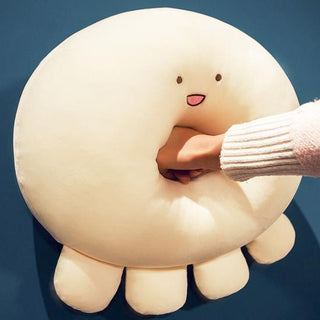Picture this: You enter a therapist's office, and amidst the soothing colors and comfortable furniture, you spot a few plush toys strategically placed around the room. It might seem like a whimsical touch, but there's more to those fuzzy companions than meets the eye. In this article, we'll explore the psychology behind the presence of plush toys in therapists' offices and why these cuddly creatures play a role in promoting a therapeutic environment.
Creating a Safe and Comfortable Space
Plush toys serve as more than mere decorations in therapists' offices; they contribute to the creation of a safe and comfortable space for clients. The soft, tactile nature of plush toys can evoke feelings of comfort and security, helping clients feel more at ease as they navigate their thoughts and emotions.
Facilitating Communication
In the realm of psychotherapy, communication is key. Plush toys, often associated with childhood and play, can serve as non-threatening and non-verbal communication tools. For clients, particularly children or those struggling with verbal expression, interacting with plush toys may provide an alternative channel for conveying thoughts and emotions.
Stress Relief and Mindfulness
The sensory experience of touching and holding a plush toy can have calming effects. The act of squeezing or cuddling a soft toy can promote relaxation, reduce stress, and help clients ground themselves in the present moment. This aligns with principles of mindfulness and can be particularly beneficial in sessions focusing on anxiety or trauma.
Symbolic Representation
Plush toys often hold personal or symbolic meanings for individuals. Therapists may strategically choose specific types of plush toys based on their clients' preferences or needs. For example, a therapist might incorporate animal plushies to represent specific qualities or emotions, fostering a symbolic connection that aids in therapeutic exploration.
Promoting Play Therapy
In cases involving children, therapists frequently utilize play therapy as a valuable tool for assessment and intervention. Plush toys become integral components of play therapy, enabling children to express themselves in a manner that feels natural and enjoyable. The toys act as intermediaries through which therapists can gain insights into a child's world.
Summary
While the presence of plush toys in therapists' offices might initially seem whimsical, their incorporation is rooted in sound psychological principles. From creating a comforting atmosphere to facilitating non-verbal communication and play therapy, plush toys contribute to the therapeutic process in diverse ways. So, the next time you find yourself reaching for that teddy bear in your therapist's office, know that there's a method to the plush madness, enhancing your journey towards mental well-being.
References:
- Kaduson, H. G., & Schaefer, C. E. (2004). 101 More Favorite Play Therapy Techniques. Routledge.
- Landreth, G. (2012). Play Therapy: The Art of the Relationship. Routledge.
- Winnicott, D. W. (1971). Playing and Reality. Routledge.





